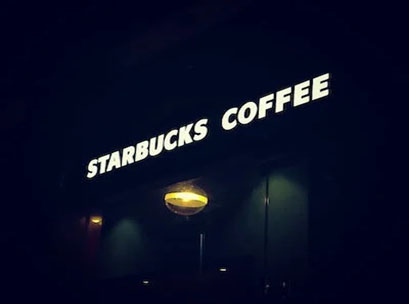In the hustle and bustle of our daily lives, a cup of coffee is not just a beverage; it’s a comforting ritual, a momentary escape, and for many, a daily necessity· Amidst the myriad coffee options available, Starbucks stands tall as a beacon of familiarity and a purveyor of a unique experience· Yet, as you glance at the menu, a subtle puzzle presents itself – why does that small cup of Starbucks coffee seemingly command a higher price than its larger counterparts? Today, let’s embark on a journey to unravel the layers of Starbucks’ pricing strategy, peeling back the curtain to reveal the artistry behind the interplay of perception and value·
The Decoy Strategy Unveiled
Step into any Starbucks, and you’re presented with a choice: a small cup for $5, a medium for $5·50, and a large for $5·90· Seems straightforward, right? Not quite· The seemingly simple pricing scale conceals a clever decoy strategy, designed to make the smaller options appear less appealing, leading you to perceive the larger cup as the better deal·
Let’s peel back the layers· The small cup, priced at $5, is strategically placed to make you question the value for money· It acts as the sacrificial pawn in Starbucks’ game, paving the way for the medium and large cups to take center stage· But is the larger cup truly the winner, or is it a play of perception?
Decoding the Psychology
Understanding the psychology behind Starbucks’ pricing is key to appreciating the subtlety of their approach· The small cup challenges your cost-benefit analysis, pushing you to consider the larger sizes· This psychological play is more than a pricing strategy; it’s a way of guiding customer choices by manipulating their perception of value·

Size matters, not just in terms of the amount of coffee but in the customer’s mind· The small cup, although sacrificial in pricing, serves a crucial role in anchoring your perception· The larger cups, priced slightly higher, then emerge as more reasonable choices, thanks to this strategic dance of pricing and psychology·
Brewing the Perception Game
Starbucks understands the human inclination to seek value for money· By setting a higher price for the small and a slightly higher one for the medium, they create an environment where the larger cup appears to be the most economical choice· But is this perception grounded in reality, or is it merely a clever illusion?

Let’s dive into the actual content of each cup· Does the large cup offer more in terms of the coffee you receive, or is it a play of perception? Breaking down the cost of production, we explore whether the perceived value aligns with the actual value, dissecting the elements that contribute to the pricing of each cup·
Building Brand Loyalty
Starbucks isn’t just selling coffee; it’s selling an experience· The decoy pricing strategy is more than a one-time play; it’s a tool for shaping customer behavior and fostering brand loyalty· The allure of a seemingly better deal on the larger cup not only boosts sales but creates a sense of loyalty among customers who perceive Starbucks as a brand offering value for money·

Choosing a size at Starbucks becomes a ritual, a thoughtful decision-making process influenced by the carefully crafted prices· The large cup isn’t just a size; it symbolizes making a smart choice· This ritual enhances the overall Starbucks experience, turning a routine coffee run into a deliberate act of choice and satisfaction·
Navigating Market Dynamics
In a saturated market, Starbucks has positioned itself as a premium brand· The decoy strategy isn’t just about pricing; it’s about creating a perception of exclusivity· By making the larger cup appear as a premium yet affordable option, Starbucks stays ahead in the competitive coffee landscape·

Starbucks has delved into the intricacies of market dynamics and consumer behavior· The decoy strategy reflects a deep understanding of the psychology of pricing and decision-making, allowing Starbucks not only to attract new customers but also to retain a loyal fan base·
Adapting to the Future
As consumer preferences evolve, so must marketing strategies· Starbucks, known for adaptability, might tweak its pricing strategy in the future· The decoy strategy, effective as it is, may need adjustments to align with changing consumer expectations and market trends·

In the era of online reviews and social media influence, Starbucks faces challenges in catering to tech-savvy consumers· The pricing strategy, a classic in-store play, must also resonate with a digital audience seeking transparency and authenticity·
Conclusion
Starbucks’ pricing strategy is more than just a numbers game; it’s a choreography of perception, value, and brand loyalty· The decoy strategy, with its small, medium, and large cups, is a testament to the art of marketing that transcends a simple transaction· As you enjoy your Starbucks coffee, remember that it’s not just about the caffeine; it’s about the experience carefully crafted by a brand that has mastered the delicate dance of pricing and psychology·